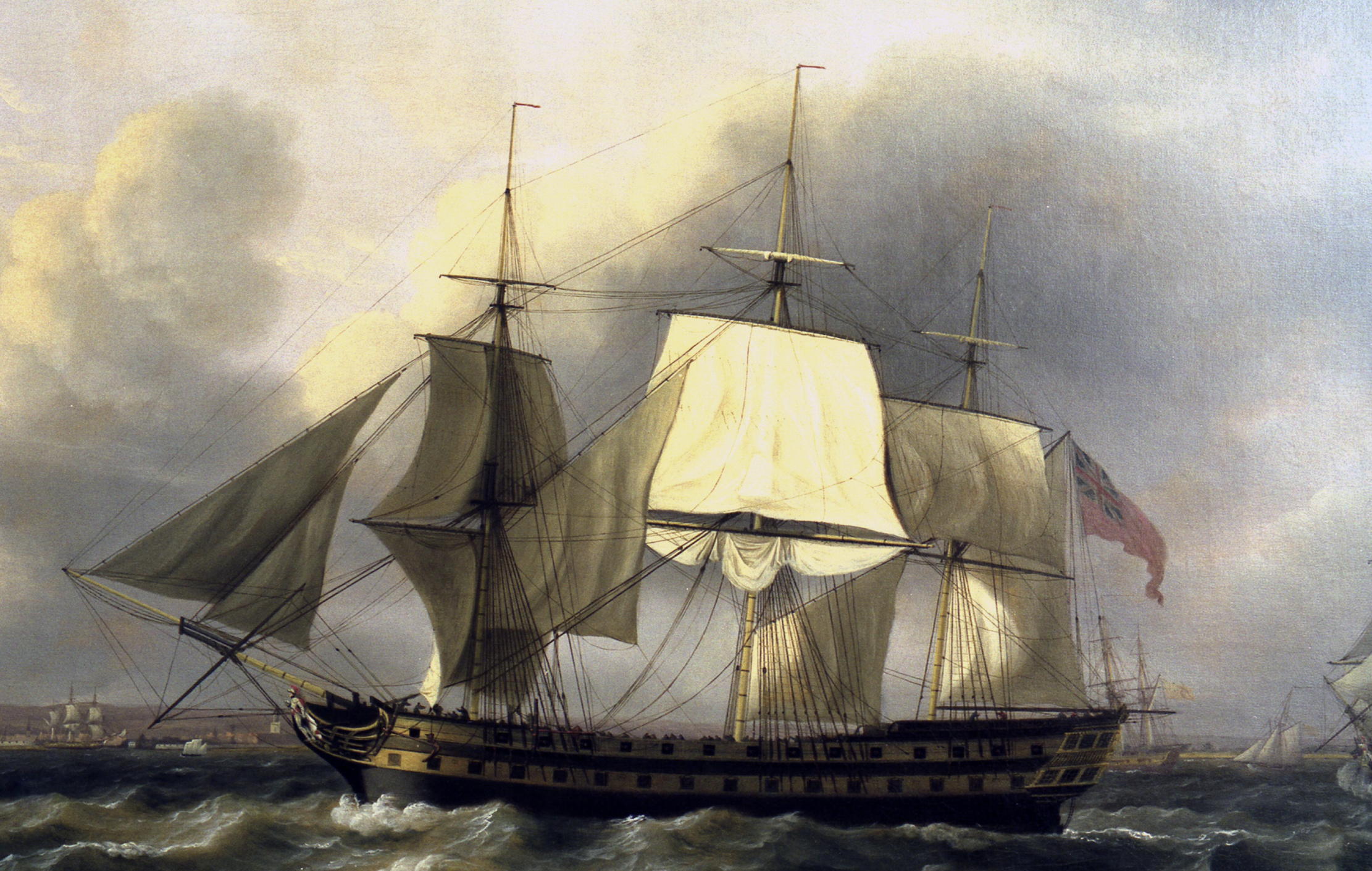Shipwreck of the Earl of Abergavenny receives protected status
The ship was captained by John Wordsworth, brother of the romantic poet William, and sunk off the notorious Shambles bank in Dorset.


The wreck of a ship captained by William Wordsworth’s brother has been granted protected status by Historic England. On the stormy evening of February 5, 1805, the East India Company’s Earl of Abergavenny — a rare 1,460-ton vessel launched in Northfleet, Kent, in 1796 — struck the notorious Shambles bank off Dorset’s Isle of Portland and later sank within sight of land, about a mile and a half from Weymouth Bay.
Its captain, John Wordsworth, younger brother to the Romantic poet, was among the 263 lives lost in icy waters; he is said to have exclaimed ‘O pilot! pilot! you have ruined me!’ as he attempted to steer the ship to safety — and ‘He who had been our living John/Was nothing but a name’.
About 100 aboard survived and the merchant ship’s vast fortune bound for China via Bengal, including 62 chests of silver dollars with a modern-day value of more than £7 million, sank to the bottom of the Channel, until it was recovered some years later. Earl of Abergavenny is among more than 400 documented shipwrecks surrounding the perilous Portland coastline.
A power is gone, which nothing can restore; A deep distress hath humanised my Soul. Not for a moment could I now behold A smiling sea, and be what I have been: The feeling of my loss will ne’er be old.
Wordsworth’s Elegiac Stanzas is among several works that many believe illustrate the turning point in his writing following his brother’s death, with his view of Nature becoming bleak.
‘This wreck has an evocative story to tell about the life and sorrow of one of our most renowned poets, William Wordsworth. But it also has an important place in this country’s shared maritime history and how the East India Company’s fleet made its impact across so much of the world,’ explains Duncan Wilson, chief executive of Historic England.
‘Its protection is testament to the dedication and hard work of Chelmsford Underwater Archaeological Unit, Weymouth LUNAR Society and Portland Museum and their volunteers. Their efforts will help us learn more about this vessel and its place in our shared past.’
Exquisite houses, the beauty of Nature, and how to get the most from your life, straight to your inbox.

New gene-drive technology could be the magic bullet to save our red squirrels, say scientists
Scientists at the Roslin Institute at Edinburgh believe that they can reduce non-native species proliferating without culling, and are asking

Rare guitars played by Prince and Noel Gallagher lead Sotheby's Popular Culture Auction
From August 29, you can bid on rare guitars, a Steinway piano from Abbey Road, art by John Lennon and

Credit: Getty Images/iStockphoto
Thatch under threat? Poor harvests, labour shortages and war are causing the industry to struggle
A new report from Historic England suggests that, despite high demand for the work, the profession is struggling.

A single peat moor stores the carbon of 1,000,000 cars — and this 'climate-action trump card' needs urgent protection
Recent research has discovered that one moor in Yorkshire stores as much carbon as one million cars would release in
Annunciata is director of contemporary art gallery TIN MAN ART and an award-winning journalist specialising in art, culture and property. Previously, she was Country Life’s News & Property Editor. Before that, she worked at The Sunday Times Travel Magazine, researched for a historical biographer and co-founded a literary, art and music festival in Oxfordshire. Lancashire-born, she lives in Hampshire with a husband, two daughters and a mischievous pug.
-
 18 country houses across Britain, from £400,000 to £4 million, as seen in Country Life
18 country houses across Britain, from £400,000 to £4 million, as seen in Country LifeOur look at the homes to come to the market via Country Life this week picks out a charming Kent cottage and an Arts and Crafts house in Leicestershire.
-
 The greatest flowers make the greatest art
The greatest flowers make the greatest artA search for still-life subjects led Kate Friend to some of the greatest gardens and gardeners in the country
